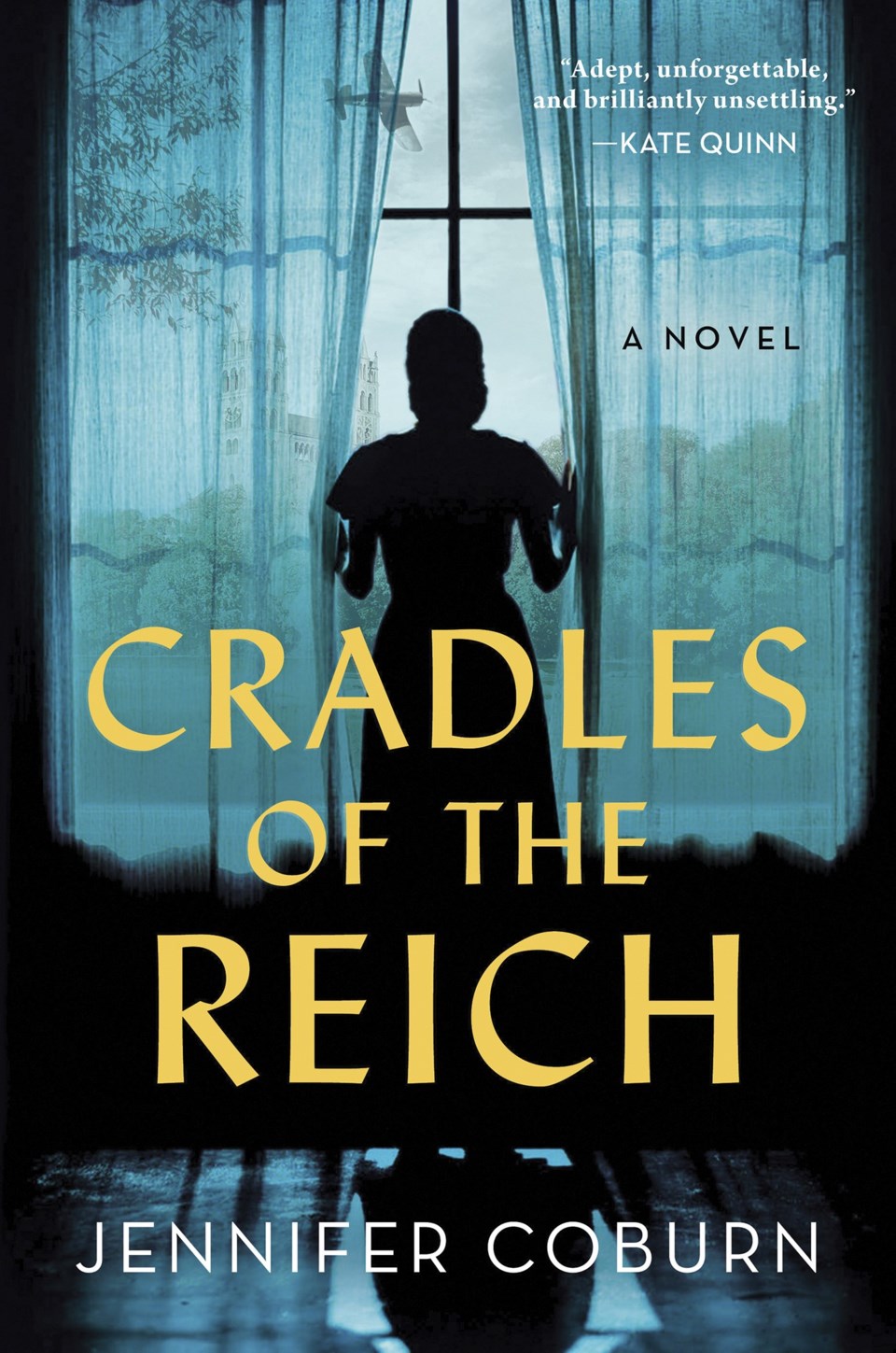“Cradles of the Reich” by Jennifer Coburn (Sourcebooks Landmark)
Gundi, Irma and Hilde all find themselves at a Lebensborn Society house for future mothers who are deemed to be racially fit. Each woman is there for the same reason: to usher life into the world. But the three main characters have different stances on Nazi Germany and its burgeoning eugenics program.
Often overlooked in history, women are the focus of Jennifer Coburn’s novel “Cradles of the Reich.” The horrors of Nazi Germany are no secret and there’s no shortage of World War II literature around, but Coburn manages to peel back layer after layer of shocking misconduct, maintaining suspense all the while.
Irma Benz, who retired from nursing after witnessing tragedy in the Great War, wants nothing more than to settle down and live a normal life with her fiancé. That is, until she finds a Jewish woman secretly living in his house.
Gundi Schiller, the quintessential young German Aryan woman, is pregnant with a Jewish man’s baby. She possesses levels of morality and self-evaluation well beyond her years, yet she is unable to fathom the cruelty of the Reich, her inexperience in suffering a byproduct of her youth and beauty.
Hilde Kramer, a prospectless high school graduate, discovers a future for herself as the mistress of a high-ranking official. Her naiveté and inexperience mixed with inside knowledge and loads of propaganda lead her into deeper, murkier waters as she desperately seeks validation and status.
“Cradles of the Reich” switches between their points of view, urgency dictating which woman’s name appears at the top of each chapter. The ending came much quicker than I expected — Coburn easily could have kept my attention a lot longer, but it’s a smart play to end where she did and not risk overstaying the story’s welcome.
Coburn applies thorough research and a strong dose of empathy to embody her characters and provide reasons for their complacency or compliance in a deadly regime, epitomizing how unaware some Germans were of exactly how the Third Reich operated.
German vernacular is laced into the story — leading to rich veins of knowledge should the reader choose to do further digging — but it’s mostly contextual, so the words’ meanings can be figured out even without Google handy.
It’s just one of the many elements that makes the novel immersive; from settings to wardrobes, the details are consistent but not over-pronounced.
Though it most definitely is fiction, the amount of truth embedded throughout makes “Cradles of the Reich” a book that fits into the canon of WWII nonfiction. Beyond using names of real people and places, it’s saturated in mannerisms, propaganda, foods and furniture that reflect actual history. Coburn also includes lesser-known pieces of Nazi eugenics, like the Aktion T4 campaign that targeted disabled people. And the pieces that Coburn took creative liberty with are explained in her Author’s Note.
A WWII newbie who knows little to nothing of the subject would find the book horrifyingly educational. A scholar of Nazi Germany would be pleasantly surprised at nuggets of fact embedded throughout the fiction and the overall level historical accuracy.
Every historical fiction novel should strive to be this compelling, well-researched and just flat-out good.
Donna Edwards, The Associated Press


